An Iconic Shape In Many Forms: 1947 Flxible Bus
There are a few vehicles that earn icon status just on their shape alone. For example, Cord 810/812s, 1957 Chevrolet Bel Air convertibles, and 1964-1965 Ford Mustangs are vehicle images that are imprinted into the American experience. Postwar Flxible buses also fall into that category. They went from passenger buses, to tour buses for musical acts, to home-built American RVs. If you have a hankering to restore a snazzy old bus and ride like an old-school country music star, then take a look at this 1947 Flxible motorhome conversion for sale on craigslist in Miami, Florida for a paltry $6,000. Are you ready to rebuild one of these American icons? Thanks to T.J. for the tip!
Americans who wished to travel long distances in the immediate postwar period had relatively few options. Commercial air travel was still in its infancy, the interstate system was still being formulated in Eisenhower’s mind, and train travel was limited to where passenger trains still stopped. By this time the railroads were looking to get rid of passenger service because that aspect of their business was usually not profitable. Car travel was on what we now call secondary roads. These roads were designed to go from town to town rather than the rapid travel between large cities that traveling by interstate highways that we have become used to.
Long distance travel for many people meant a bus ride. Greyhound and Trailways controlled a lion’s share of the market, with regional bus companies filling in the gaps. Of course, it took a long time to travel by bus, and the interiors of the buses of the period weren’t exactly spacious. Air conditioning was also a rarity. Think about this experience at a time when Saturday baths was a thing. Oh, chain smoking was a thing too.
Once these buses were worn to the point that purchasing a new bus was a better financial decision for the company, they were offered for sale. Repurposed buses became popular with the many traveling musical acts of the time. The second picture is of a tour bus used by Bob Wills and the Texas Playboys. Bob was the king of the western swing variant of country music, and he toured with his band for decades in Flxible buses. He was thought to have owned three of them over his career. Imagine the stories the bus in the picture above could tell if it were able to talk about the adventures the band experienced traveling to dance halls and honkey tonks all over the United States.
Further down the road for these buses was a life as a recreational vehicle. Some folks who bought them created beautiful conversions of these stylish buses, while some owner’s lack of skills were apparent. You also have to take into account the quality of the materials they had to work with. A lot of the materials were designed for mobile homes and other recreational vehicles. Some of that material was purchased second hand or pulled from wrecked vehicles. Remember that these conversions had to include plumbing systems with holding tanks, 12 volt and 110 electrical systems, and climate control. Newer engines and transmissions were also retrofitted on many buses to allow for highway speeds.
The Flxible you see here was converted some time ago into an RV. Before you look at it with a critical eye, try to remember that this conversion was probably done in the early 1980s, when a fair number of these buses were still roaming the Earth in some fashion. The huge luxury motor coaches we see all over the roads today were still a decade in the future. The famous Silver Eagles that so many high end bands preferred were the prototypes for these bus conversions. Some met or exceeded that standard. Some didn’t.
Add to that the clues we see that this bus has been recently lived in. As the price of housing soars and folks with less disposable income are running out of options. I have even read that some cities are overrun with derelct RVs parked on neighborhood streets in a multi-wheeled form of squatting. It beats a tent or a cardboard box I guess, but the prospect of living semi-permanently in something like this rather than using it for recreation is sobering.
The seller tells us relatively little about the Flxible you see here. It is powered by a AGM C471 engine installed. It will run, but has a dead battery right now. Googling that set of letters and numbers reveals little, so perhaps a reader more educated in engines large enough for this bus will help us out here. The bus also comes with a 15,000 watt, 3 cylinder Onan diesel generator that runs and has been used for relatively few hours.
As mentioned, these iconic buses have gone through three different life cycles: passenger bus, tour bus, then recreational vehicle. At the low asking price of $6,000, I hope that someone is able to restore the bus and use it again. It would be great to see such a beautiful shape gliding down the highway again. Sadly, I am afraid the asking price may be low enough to send this bus into yet another life cycle: a home for someone with limited means. As more and more experts tell us that we are in a recession or going into one, people may be looking at buses like this for survival. Like Model A Fords in the Great Depression, sometimes iconic vehicles become part of darker periods of history.
What would you do with this bus if you had the space and means to restore it? With that, what do you think the future of this bus will be? Please share your thoughts in the comments.
Auctions Ending Soon
 2006 Ford Mustang Saleen S281 SCBid Now4 hours$16,000
2006 Ford Mustang Saleen S281 SCBid Now4 hours$16,000
 2002 Subaru Impreza WRXBid Now3 days$333
2002 Subaru Impreza WRXBid Now3 days$333
 1975 Chevrolet Corvette ConvertibleBid Now3 days$3,000
1975 Chevrolet Corvette ConvertibleBid Now3 days$3,000
 1964 Ford F-100 Camper CustomBid Now3 days$2,000
1964 Ford F-100 Camper CustomBid Now3 days$2,000
 2006 Jeep Wrangler SportBid Now5 days$10,500
2006 Jeep Wrangler SportBid Now5 days$10,500
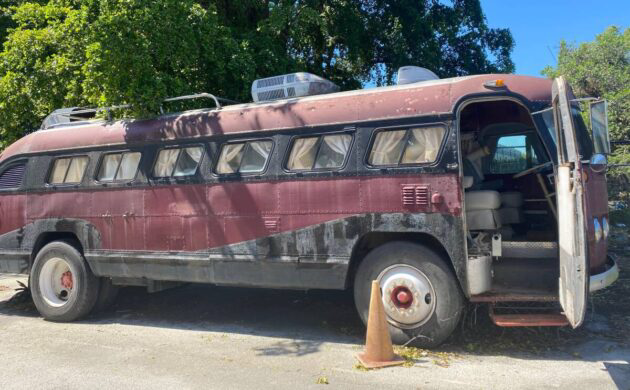
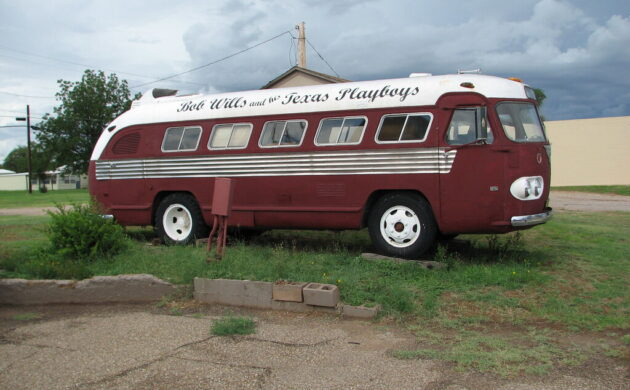
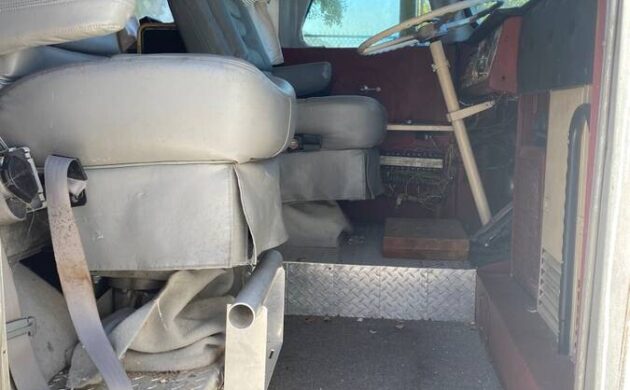
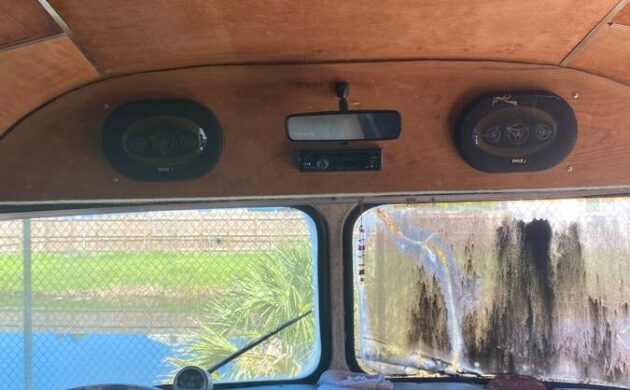
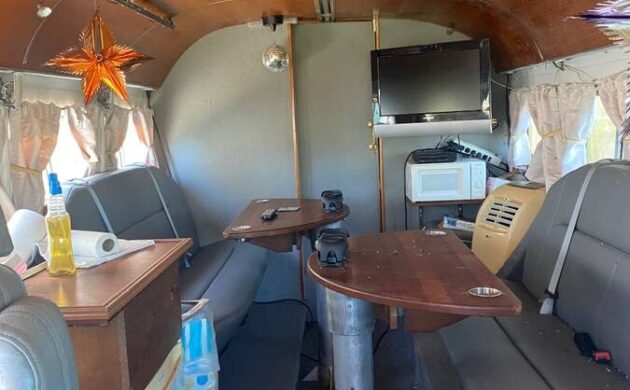
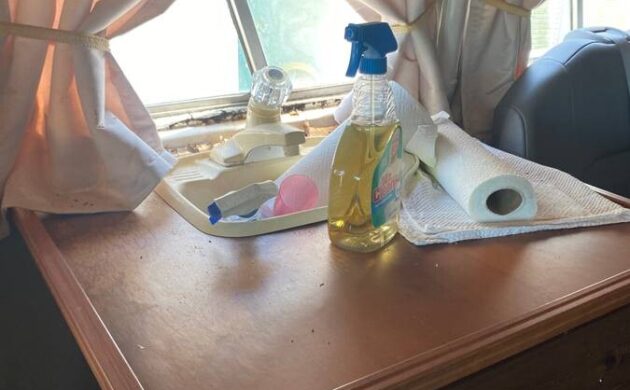

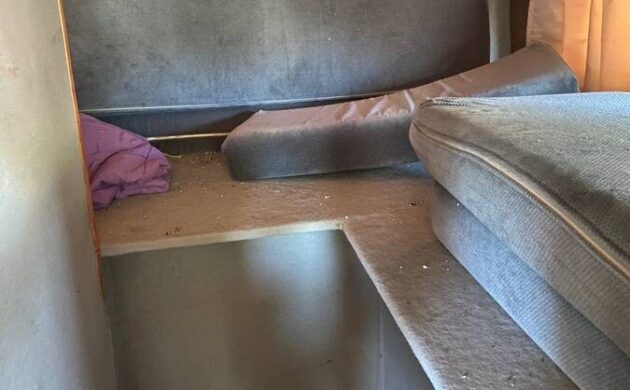

Comments
The engine is a GMC 4-71. It is a Detroit 2-stroke four cylinder diesel, each cylinder 71 CI. Fuel hogs, but virtually indestructible. Just keep the air, oil and fuel clean, and they’ll run forever. That’s why all the bus companies used them. Four cylinders means only nine moving parts (1 crank, 4 rods, 4 pistons).
Um, I don’t think so. The 4-71 was a 2 cycle, but I think had a cam and valves( 4 per cylinder) and the supercharger( that pressurized the crankcase) and not a 2 cycle like a motorcycle.
Also, it is a Flxible, not a flexible. The company wanted to trade flexible, but the US trademark office figured that was a common word, so could not be trademarked. That’s why the company went with Flxible.
I always thought it was “Fixible”,,,
Jeff, I was one of those musicians who travelled the country in something like this. In those days, it
was a step up from a lot of the reworked school buses that a lot of bands used back then. Not much mind you, but at least the bunk you
slept in was more comfortable than the school bus type. The one I rode on could sleep eight– if you counted
the couches up front. Yes, they were
cramped but it was party time all the
time. Sometimes, I’d get so eff’d up
I didn’t know what town we were playing in that night. Watch the film
Honeysuckle Rose and you’ll get some idea of what life on the road was like. If I were still playing today,
I’d take the GMC bus I saw here earlier this week. Might be a bit more
room in that one.
Nice old bus. I remember the first time I rode in on. To Beckley,W.Va. When I joined the army. Going around the curves. It looked like the rock edges along he road. Was gonna hit the bus going around the curves. Our neighbors brother had one. He lived in Arizona and would visit his sister every summer in W.Va. That was in the 70-80,s I miss seeing it. If I had the money. I fix it up and live in it.
Cool old “stagecoach”, and a great rendition by the author of travel by the masses after the war. Planes were incredibly expensive, and fell out of the sky regularly, or so it seemed, trains didn’t go everywhere, and many times, a bus was the only way to get from the train station, usually a big city, to rural America. This looks a bit rough, but it appears someone did a lot of work. I never heard of a “turbo” 4-71, and as is probably adequate for this. This has tubeless tires, and I’d imagine updated brakes and steering, and while most Detroits are hill shy, they were high revvers, compared to most diesels, and I bet this unit rolls out 70-80, no problem. Like the author says, housing, or lack of it, has reached dire proportions in some places. More and more people are living in Subarus and crapping in laundromats, this would be the freakin Ritz. Cool find, for sure.
I have always had a soft spot for busses. Especially those of this period. The country was in such a period of growth and expectation after the war. I’d jump on this if it were closer to home and could be driven. Such an iconic design.
Probably needs an engine transplant to be registered in CA, but these are cool.
Originally though something like this would be cool, but sensibility reigned. So I just bought a sweet 97 Foretravel U320 that saves me from the vintage rabbit hole. I hope. Lol.
That’s sensible, right?
First time I recall seeing one converted to a RV was in the Robin Williams movie RV this one I think is ready to become a donor for someone else
Is the Harley-Davidson speedometer an original gauge that Flxible would have used? Does anyone here know that answer?
The 140 mph speedo is not original to the Flex. I haven’t been in the “Duesenbarge” (1945 Flxible Clipper converted in ’59) lately. I don’t remember what the speedo peaks at but I recall seeing indicate 80 mph on the interstate.
4-71 were 2 stroke ,turbo charged on top of superstraged were available but not many were ,not high revving ,just sounded like they were because they fired twice as often
I could hear the wife now, you did what.
(I sold the Newmar Essex and bought a new 1947 Flxible, bus conversion!)
I think the seller may have some incorrect information on the engine. All 2 cycle Detroit 71 series Diesel engines had a roots style blower due to a two cycle Diesel engine does not create vacuum to bring air into the cylinders so a blower is required to get air into the cylinders at slightly above atmospheric pressure. From my research this bus should of come with this setup. Not saying it isn’t possible that a latter model setup with a turbo could have been swapped into the bus by previous owner. Even it it did have the turbo setup it would be a bit of a slug to pull the hills by itself much less if towing another vehicle. It would be an interesting conversation piece but don’t think I would be happy with it today, maybe 40 years ago when I didn’t know any difference it would have been cool to rom around the country in but after driving a coach with a 15 liter, 600HP, Cummins in my Coach it may get boring running 50 down the interstate. I get bored if I have to run 70.
All BS aside these were cool looking coaches in there day and hopefully someone brings it back to life.
Yea, it’s a 4-71 Detroit 2cycle supercharged inline 4 cylinder diesel engine, some with four and some with 2 valves per cylinder all exhaust because the intake air is brought in through ports in the sleeves
Restoring the punctuation in the model # would yield “A GMC 4-71”
Top horsepower would probably be about 40 HP per hole, or around 160HP, probably at a screaming 2250 RPMs.
The fuel system consists of a small low pressure supply pump feeding high pressure-building injectors operated by the camshaft.
Not as simple as the Lister diesels, but simple enough that any farm boy could probably overhaul one and make it work for a while.
Dirt is the #1 enemy of any engine, but especially true of the 2 stroke GMs which is why they excelled in boats.
It’s amazing to me that when compared to the 3-4 MPG of the sixties Detroit, todays electronically controlled diesels, some sixty years later, have only been able to double that figure.
They also used this engine in may different machines the RR used for work. Tie saw, tie extractor, small tampers etc.. They run them all day and then repeat. Tough little diesel.
One more piece of info: The blower pressurizes the air box around the intake ports on each cylinder liners, not the crankcase. And since the cam actuates the exhaust valves, you have 3 rocker arms per cylinder; an exhaust valve, the injector and a second exhaust valve. Finally, any “Boost” the blower produces, just forces the air into the cylinder as the piston starts its upward motion until the piston passes the ports.
The uni-flow 2-cycle diesel is a work of art. Unfortunately, they’re illegal on anything that has to meet emissions. GM sold everything from the 53, 71, and 92 series to MTU, a division of Rolls Royce. You rarely hear an old Jimmy sing or cry any longer, but when I do it brings back sweet memories of my youth.
Thanks, man, most people see the supercharger and think drag racing, but it here was more of a “blower”, as you describe, to help “blow” the exhaust out faster, kind of a supercharger, I guess. You forgot one important piece of Detroit protocol. Before leaving, slam your finger in the door, to get in the right frame of mind. You had to drive them like you were pixxed off at them. 2 cycle Detroits were very common, they were cheap, and could be rebuilt in an evening, ready for the next days abuse. I drove LOTS of trucks with Detroits, one more worthlesss than the last, for road use, anyway.
My favorite Deeetroit story, I worked for a dairy outfit, near Madison, Wis. and had a run to Bloomington, Ill, about 3.5 hours away( 3 hours with a Cat motor) My truck was a Louisville Ford with a 238 and a 10 speed. I made the trip, without a hint of trouble. Got to the “junkyard”, mechanic says pull it in the shop, it needs a service. Next day, I come to work, my truck is gone. Where is truck 10, I asked. Oh, the mechanic said, you use truck 8 for a while, when we changed the oil, upon startup, it threw a rod through the case! No hint of previous trouble, mind you. Well, I finally got the truck back, new motor, I thought, alright, more power,,,it didn’t run any different than the old motor. Good thing I was being paid by the hour,,,
Great write-up Jeff. Specifically the illustration of what postwar long-distance travel looked like for a typical person/family of average means. Think about that the next time you are making a 1000 mile trip in your comfortable, well-appointed, quiet, fast, safe, effortless SUV as you cruise the interstate highway system at 75 mph. We’re all spoiled.
With all the talk about the 2 cycle GMC engine in this bus got my mind working again… as I recall most of these old buses did not come from the factory with a Diesel. I recall that most were gasoline six cylinder engines… of varying makes, even a Buick in some models. International in many others…
https://www.youtube.com/watch?v=ex8sK23O8u8
the above site is a totally restored 1947 (given it is larger and built for “airship” operation) that shows what it can look like. I was in one of those old Good Year Airship “Tenders” at one time and it seemed VERY comfortable to me.
I was actually surprised to see that this one had a 4-71 in it. I am wondering if it is a “replacement” after the original gas engine wore out.
Most (or all?) of the Flxibles in the 40s were Buick straight 8 powered, including our 1945 Clipper. It now has a Chevy 348 or 409. Whatever, it has plenty of torque.
Ours has a wall between the luggage compartment and the original bathroom (sink and potty) and the dog house cover that gives access to the rest of the engine/trans.
I’m not sure what’s with the extra scoop on the rear engine cover?
The scoop up on the rear of the roof is for cooling air. The radiator is up there.
My Mom and Dad belonged to the FMCA in the 60s&70s. They had a Flex and I can’t remember what engine it had but it was replaced with a 348 Chevy that came out of a 58. It was a lot of fun going to the meets and making friends from different states . They sold the Flex and bought a Marmon-Harrington which to me was a nicer coach it had a Buick nailhead for power.
The 4-71t was put in with a slant and required a little extra space thus the scoop. Many of these have v671 or v692. They fit the space better than the straight 4 alignment. This one has the ddec electronic which is supposed to get better mileage. We shall see.
Has Allison military 5 speed automatic transmission and the last owner put 24” wheels instead of the standard 20” for extra speed….
A good interior cleaning, a fresh paint job, fix some mechanical issues and you would be pretty much good to go.
These were used in several different settings. Chicago F.D. had one customized for a mass injury transporter. They were also used to anchor hot air balloons.
Sometimes, these days, we forget what life was back in this coach’s prime. For the day, 50-55 mph was great! Not so today. There were frequent rest stops, eating then back on the road. People took life at a more leisurely pace than today. They enjoyed the travel. Today, glued to our cell phones and want to be someplace quickly, don’t relaxe to enjoy the trip or the stay at our destination. Sad.
Well, I went to the Craigslist site and viewed all of their pictures of this bus, and it is true… it is a “Re-powered” bus. The back right side door was built for access to the luggage compartment, and there was access to the eng. from that space once the covers were removed. This bus has the “re-power” basically filling the luggage compartment with various apparatus. I don’t think that the re-power with a 2 cycle diesel was a good decision. REO built some of the original engines and they seemed powerful enough to push the old buses up our Easter Mountains with a load of people and luggage, should have just re-built the original engine instead of loosing the space. But it is NOT my bus so….
I’m about to purchase a ‘47 flxible converted to a motorhome, I was told that the engine is an original V6 gas powered, currently not operational. Any idea what engine can it be?
The original was a Buick straight eight. Join Flxible owners international for great info and help. Good luck
Ted
Was it 1945 frog face clipper?
With aircraft spruce inside?